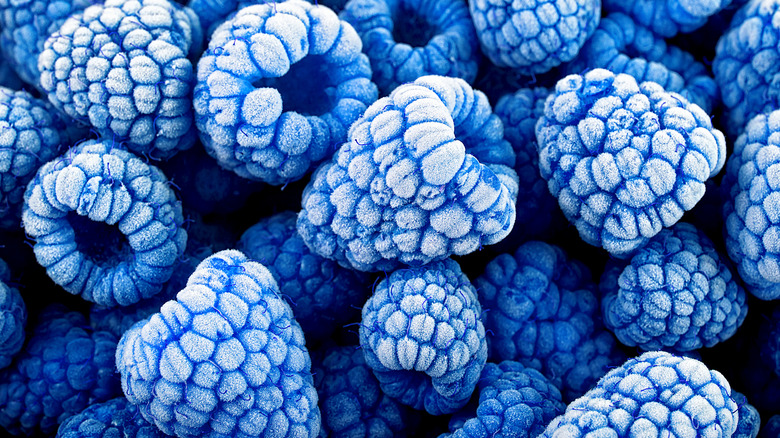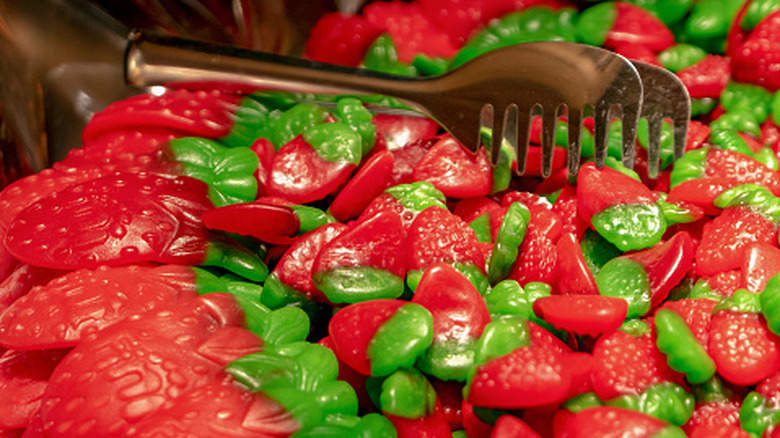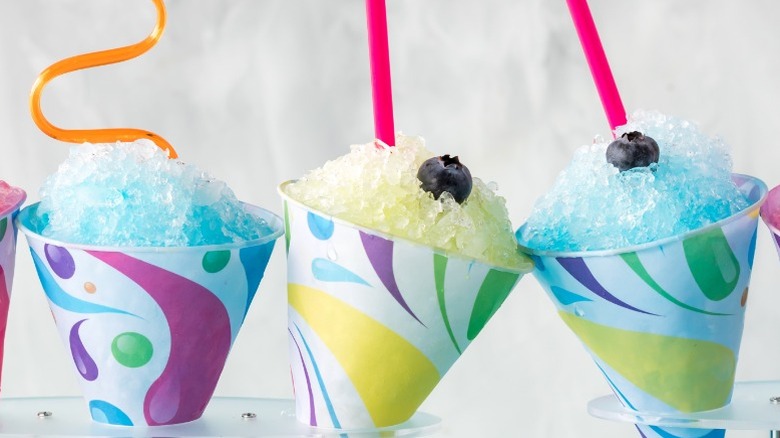How Did Blue Raspberry Become A Flavor Anyway?
If you were to go to the produce aisle of your local supermarket and take a look at the raspberries, all snug in their little cartons, you would find that they are not, in fact, blue. Instead, they are a purplish shade of red, like the cheeks of someone blushing very intensely. You may find that they would be delicious baked into a dessert bar, or turned into ice cream cake. But you will not find a single blue raspberry, no matter what candy companies or slushie machines will tell you. Although blue raspberries do exist in nature, they aren't typically sold in American supermarkets. The "blue raspberry" flavor we know is an invention of food companies.
But in the words of Maya Rudolph as Dionne Warwick, to what end? Raspberries are already a perfectly appealing berry, with a sweet taste and a distinctive, inviting color. Why did these companies feel the need to sell us fiction instead of the genuine article? Well, it turns out blue raspberry-flavored food dye was a handy replacement for the red kind, which was deemed too dangerous for human consumption.
There were concerns about red food coloring in the '50s
In the 1950s, the primary red food coloring for raspberry-flavored treats was something called FD&C Red No. 2, named after the Food, Drug, and Cosmetic Act of 1938. (You can call it amaranth for short.) Although we remember the '50s as a time when people happily put just about anything in their bodies (anyone for aspic?), there were growing concerns about the effects certain food additives might have on a person's health. Red No. 2 wasn't immune to these worries. A 1957 report gave it the all clear, but the study turned out to be funded by the chemical industry, which was hardly reassuring.
In 1958, a new act, the Food Additives Amendments Act, stipulated that food manufacturers had to demonstrate the safety of their additives before they went to market. As you'd expect, anything that caused cancer in humans or animals was an immediate no-go. Two years later, the Color Additive Amendment broadened these same rules to include food colorings. Although Red No. 2 wasn't officially banned until 1976, the writing was on the wall, and food companies had to do something if they wanted to keep selling raspberry-flavored treats.
Three important companies in the history of blue raspberry
The first recorded use of the phrase "blue raspberry" came in 1958, when a trade magazine described a company called Gold Medal offering a new flavor for snow cones. (Gold Medal, for its part, still makes snow cones to this day, and blue raspberry remains among its top-selling flavors.) But the flavor didn't fully catch on until the early 1970s, when two separate companies, ICEE and Otter Pops, started to offer blue raspberry options. It remains unclear who beat the other to the punch, but in any case, blue raspberry proved to be a massive and enduring hit.
If this seems like a betrayal of the humble raspberry, don't worry: Raspberry treats were never really raspberry-flavored to begin with. The flavor we accept as raspberry is actually a mixture of banana, cherry, and pineapple flavoring. If we're bending the rules that far already, why not make whatever concoction passes for raspberry blue?


